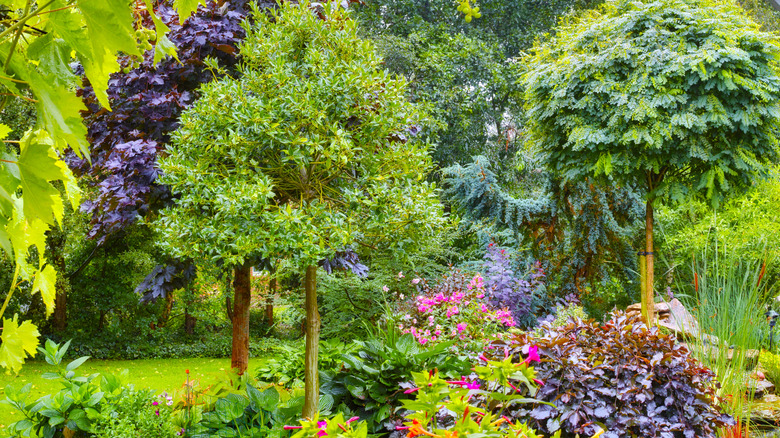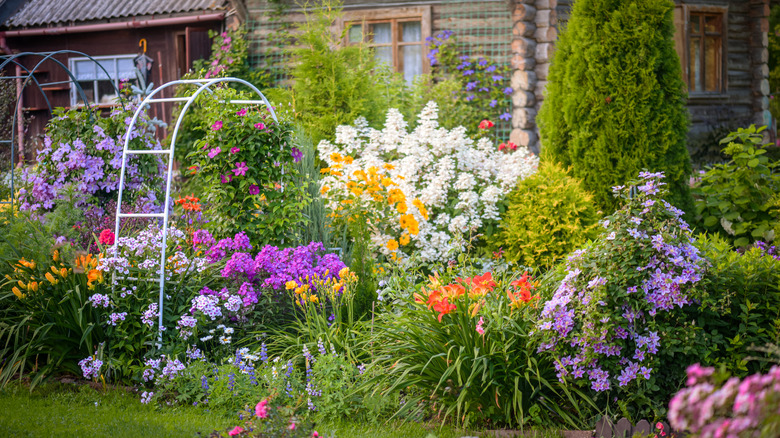The Two Types Of Perennials Every Gardener Needs To Know
If you are a lazy gardener, planting every year might feel like a little too much effort. That is where perennials can help, as they stick around for the long term. They live for at least two years, and some may even survive for decades.
Perennials are broadly divided into two categories. One is herbaceous perennials, and the other is woody perennials. As you can probably already tell by their names, herbaceous perennials have soft, nonwoody stems, while woody perennials have thick, tough, and lignified stems, which we call wood. Herbs you plant once, and that return to your garden on their own each year. This category includes things such as rosemary (Salvia rosmarinus), lavender (Lavandula spp.), and tarragon (Artemisia dracunculus.) Woody perennials are pretty much all the shrubs and trees that you see out there, and even some vines like Asian bittersweet (Celastrus orbiculatus) and Chinese wisteria (Wisteria sinensis).
The difference between herbaceous and woody perennials
The difference between herbaceous and woody perennials is not just the way their stems are built. They behave differently, have different maintenance needs, and uses. Let's start with how they behave. Herbaceous perennials usually die back to the ground in winter. There is nothing to worry about, though. They are just hibernating to survive the winter. Once spring returns, they will too. Woody perennials, on the other hand, stay upright throughout the year, although some still go dormant during harsh weather. Woody perennials, especially trees, grow slowly and may take years to establish. On the other hand, herbaceous plants grow fast.
When it comes to care and maintenance, herbaceous perennials benefit from deadheading and dividing every few years to maintain vigor. Woody perennials, on the other hand, require less frequent replanting but more attentive pruning and structural care, which is why youshould be aware of the best time to trim your trees and shrubs. Also, since these plants stick around for the long haul, they need occasional fertilization and mulch to protect their roots and reduce stress.
As for their use, herbaceous perennials are the binding element in any garden. They create harmony among the components of a landscape that might otherwise seem random. On the other hand, woody perennials basically create the foundational skeleton for your landscape. Examples include Russian sage (Perovskia atriplicifolia), tree peonies (Paeonia suffruticosa), and roses (Rosa spp.), which are already difficult plants to grow in the garden.

